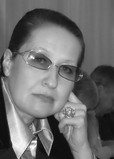Effects of power load on hormonal profile of elite female powerlifters influenced by various dietary energy supplies
Фотографии:
ˑ:
Dr.Biol., Professor R.V. Tambovtseva1
Postgraduate student K.V. Sergeeva1
1Russian State University of Physical Education, Sport, Youth and Tourism (SCOLIPE), Moscow
Women's weightlifting, powerlifting, and bodybuilding are rapidly developing nowadays. Objective of the study was to analyze the effects of various levels of available energy on the hormonal profile and menstrual function of females engaged in powerlifting with dietary modifications but without reducing the volume and intensity of physical loads. The study involved the 22-29 year-old highly-qualified female athletes specializing in powerlifting (n=14). The experiment lasted 80 days and included two 5-week stages (mesocycles). A general, sports and gynecological history was taken. The radioimmunoassay technique was used. The blood samples were taken from the median cubital vein in the morning after two days of training. The measurements were taken at the beginning of the follicular phase, on the 3rd day of the menstrual cycle and three times during the experiment: at the beginning of the study, at the end of the first mesocycle and at the end of the second mesocycle. Energy costs during the training sessions were calculated by the method of N.N. Saksonov. The amount of energy spent during the day was calculated based on the special timing tables.
It is shown that physical load, as a stress factor, does not have an inhibitory effect on hormones, while a low energy availability level violates the rhythm of hormone secretion. The insufficient level of available energy slows down the release of the gonadotropin-releasing hormone by the hypothalamus and blocks the secretion of luteinizing hormone by the pituitary gland.
Keywords: female athletes, powerlifting, hormones, estradiol, testosterone, prolactin, cortisone, physical load, available energy level, diet.
References
- Gorulev P.S., Rumyantseva E.R. Zhenskaya tyazhelaya atletika: Problemy i perspektivy [Women's Weightlifting: Problems and Prospects]. Study guide for students majoring in 032101 (022300): SC RF PCS. M.: Sovetskiy sport publ., 2006. 162 p.
- Datsenko I.I., Gabovich R.D. Profilakticheskaya meditsina. Obshchaya gigiena s osnovami ekologii [Preventive medicine. General hygiene with basics of ecology]. Study guide. Kiev: Zdorovye publ., 1999. 694 p.
- Saksonov N.N. Energeticheskie tratyi tyazheloatleta: lektsiya dlya studentov-zaoch. in-tov fiz. kulturyi, slushateley kursov usovershenstvovaniya, trenerov i prepodavateley tyazh. atletiki [Weightlifter Energy Consumption: Lecture for correspondence students of institutes of physical education, students of refresher courses, trainers and weightlifting teachers]. SCOLIPE publ.. M., 1980. 22 p.
- Trappe T.A. [et al.] Energy expenditure of swimmers during high volume training/Medicine and Science in Sports and Exercise. 1997. Vol. 29, no.7. pp. 950–954.
- Hatfield F.C. Fitness: The complete Guide: Offical Text for ISSA's Certified Fitness Trainer Program. International Sports Sciences Association. Edition 8.6.6. Саrpinteria: ISSA, 2013. 735 р.
- Hill R.J., Davies P.S. Energy intake and energy expenditure in elite lightweight female rowers. Medicine and Science in Sports and Exercise. 2002. Vol. 34, no.11. pp. 1823–1829.
- Wikström-Frisén L. Training and hormones in physically active women with and without oral contraceptive use. Umeå University. Umeå, 2016. 82 p.



 Журнал "THEORY AND PRACTICE
Журнал "THEORY AND PRACTICE